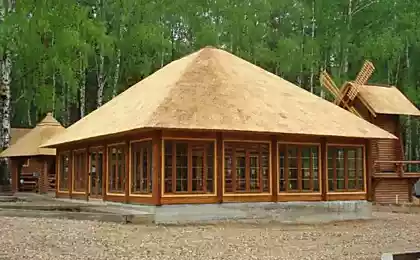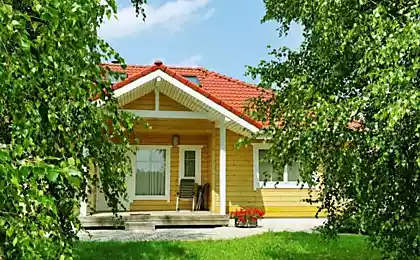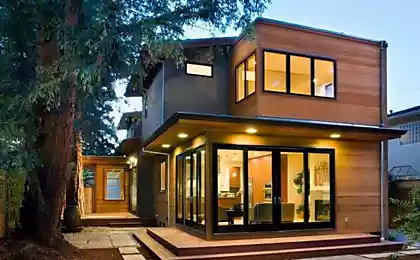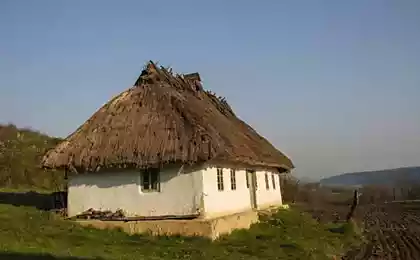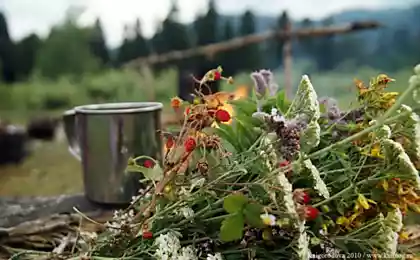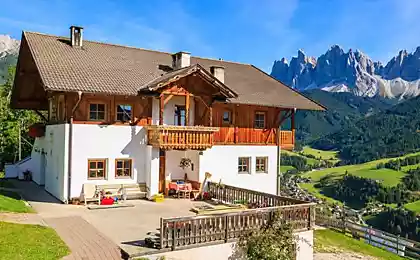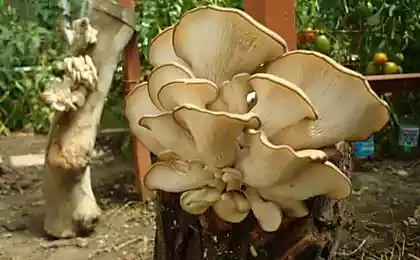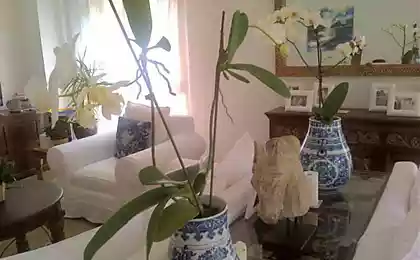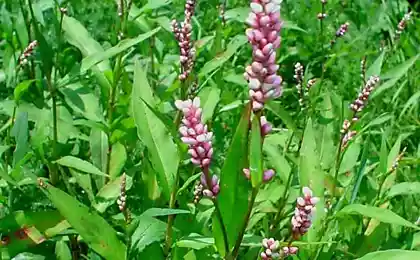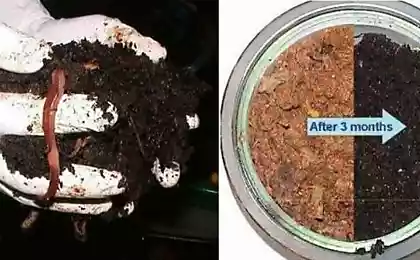476
Green roof — a beautiful eco-friendly solution for Your home
Green roof is a layered structure consisting of planted in special soil plants, drainage blagonamerenny, filtering and protective elements. Design features over the standard "pie" of the roof includes vapor barrier, insulation and waterproofing. The roof can be both flat and pitched with the recommended grade of up to 25 degrees.
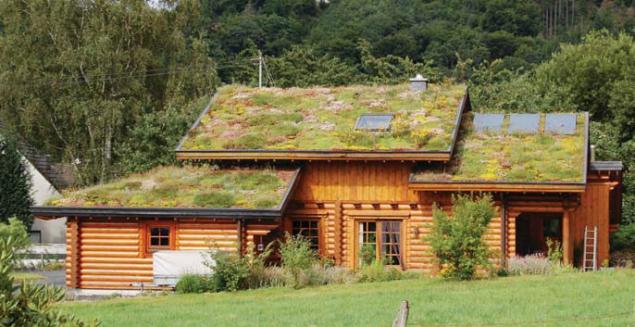
Green roof has a significant weight, and therefore need reinforced base under it. There are two types of such roofs — extensive and intensive landscaping. Consider planting drought tolerant low-growing perennials with small root system (different types of Sedum, lawn grass, timani, carnations, irises, etc.).
The roof of the second type allow the planting as perennials, and shrubs and trees up to 10 m. the thickness of the soil layer in this case is significantly more, respectively, and increases the weight of the roof. In addition, intensive roofs require irrigation.
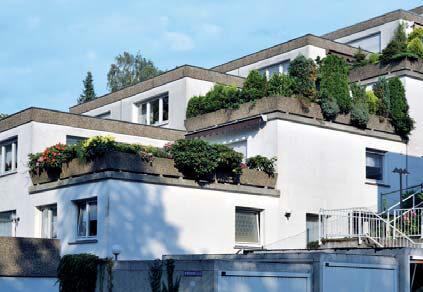
Consider the "cake" of green roof. If waterproofing is resistant to the root (a special membrane bitumen — polymer, PVC, EPDM, TPO, etc.), then on top of it is placed a layer of a thick geotextile (a density of at least 400 g/sq. m.) with overlapping cloths of about 100 mm, to protect the waterproofing from mechanical damage during installation of the overlying layer of the "pie".
If waterproofing is not immune to the root (the usual filler bitumen or bitumen-polymeric materials), then on top of it lay the first polymer film (in one or two layers with a sizing overlap, or increased to 500 mm and the overlap of the paintings) for protection against root penetration, and then the geotextile. Then put the drain-blagonamerenny or drainage element, which serves as the basis for substrate. This is most often used as a profiled membrane made of polyethylene high density (for example, DELTA-FLORAXX and DELTA-TERRAXX from DORKEN, Germany).
Such membranes thin and light, but though they have a high compressive strength that allows them without deformation to withstand the considerable weight of the substrate. Quality products made only from the primary or secondary polyethylene, recycled from industrial waste (but not from household waste). Usually membrane is composed of cells (height 8-20 mm) in the form of a truncated cone. In the case of extensive roofs the type of change in the membrane cells of which can accumulate in the water necessary for feeding the roots of plants in dry periods.
However, in the upper part of these cells is provided with openings for discharging excessive water (mainly melt) under the membrane for the waterproofing, followed by diverting through the drainage system outside the roof. For the roofs of intensive types use membrane only with the drainage function.
The ribs of the membrane attached to a layer of geotextile to prevent ingress of particles of the substrate in the cell to avoid sedimentation. The size of the openings of the geotextile should be 120-150 µm to ensure both filtration and unimpeded flow of water through a cloth. Important point: more reliable and durable are the membranes that have geotextile welded to the projections (and not glued to them).
The membranes are produced in rolls with a width of typically 2 m. they Lay with an overlap of about 100 mm. it is Desirable to use materials with geotextile acts beyond the edges of the shaped canvas. This will allow the installation to overlap the geotextile joints of adjacent webs, thus reliably protecting the membrane from siltation.
On pitched roofs on top of the membrane frame set of a particular type (for example, in the form of wooden bars section 50 x 50 mm fixed with the interval of 500-600 mm), which will keep the substrate from slipping. For the same purpose it is necessary to strengthen the eaves — the wooden beam, etc.

Profiled membranes for pitched roofs should have a high UV stability, so as not to collapse in the event of slipping of the substrate in the ridge part of the roof
The top layer of the green roof soil. As it use lightweight substrates on the basis of minerals, mixed with fertilizers.
The composition of the substrates varies depending on roof type (extensive, intensive), species growing on her plant: varies the pH, amount of organic matter. After laying substrate planted plants. published
P. S. And remember, only by changing their consumption — together we change the world! ©
Join us in Facebook , Vkontakte, Odnoklassniki
Source: www.schiefer.ru/publication/ecological_solution/

Green roof has a significant weight, and therefore need reinforced base under it. There are two types of such roofs — extensive and intensive landscaping. Consider planting drought tolerant low-growing perennials with small root system (different types of Sedum, lawn grass, timani, carnations, irises, etc.).
The roof of the second type allow the planting as perennials, and shrubs and trees up to 10 m. the thickness of the soil layer in this case is significantly more, respectively, and increases the weight of the roof. In addition, intensive roofs require irrigation.

Consider the "cake" of green roof. If waterproofing is resistant to the root (a special membrane bitumen — polymer, PVC, EPDM, TPO, etc.), then on top of it is placed a layer of a thick geotextile (a density of at least 400 g/sq. m.) with overlapping cloths of about 100 mm, to protect the waterproofing from mechanical damage during installation of the overlying layer of the "pie".
If waterproofing is not immune to the root (the usual filler bitumen or bitumen-polymeric materials), then on top of it lay the first polymer film (in one or two layers with a sizing overlap, or increased to 500 mm and the overlap of the paintings) for protection against root penetration, and then the geotextile. Then put the drain-blagonamerenny or drainage element, which serves as the basis for substrate. This is most often used as a profiled membrane made of polyethylene high density (for example, DELTA-FLORAXX and DELTA-TERRAXX from DORKEN, Germany).
Such membranes thin and light, but though they have a high compressive strength that allows them without deformation to withstand the considerable weight of the substrate. Quality products made only from the primary or secondary polyethylene, recycled from industrial waste (but not from household waste). Usually membrane is composed of cells (height 8-20 mm) in the form of a truncated cone. In the case of extensive roofs the type of change in the membrane cells of which can accumulate in the water necessary for feeding the roots of plants in dry periods.
However, in the upper part of these cells is provided with openings for discharging excessive water (mainly melt) under the membrane for the waterproofing, followed by diverting through the drainage system outside the roof. For the roofs of intensive types use membrane only with the drainage function.
The ribs of the membrane attached to a layer of geotextile to prevent ingress of particles of the substrate in the cell to avoid sedimentation. The size of the openings of the geotextile should be 120-150 µm to ensure both filtration and unimpeded flow of water through a cloth. Important point: more reliable and durable are the membranes that have geotextile welded to the projections (and not glued to them).
The membranes are produced in rolls with a width of typically 2 m. they Lay with an overlap of about 100 mm. it is Desirable to use materials with geotextile acts beyond the edges of the shaped canvas. This will allow the installation to overlap the geotextile joints of adjacent webs, thus reliably protecting the membrane from siltation.
On pitched roofs on top of the membrane frame set of a particular type (for example, in the form of wooden bars section 50 x 50 mm fixed with the interval of 500-600 mm), which will keep the substrate from slipping. For the same purpose it is necessary to strengthen the eaves — the wooden beam, etc.

Profiled membranes for pitched roofs should have a high UV stability, so as not to collapse in the event of slipping of the substrate in the ridge part of the roof
The top layer of the green roof soil. As it use lightweight substrates on the basis of minerals, mixed with fertilizers.
The composition of the substrates varies depending on roof type (extensive, intensive), species growing on her plant: varies the pH, amount of organic matter. After laying substrate planted plants. published
P. S. And remember, only by changing their consumption — together we change the world! ©
Join us in Facebook , Vkontakte, Odnoklassniki
Source: www.schiefer.ru/publication/ecological_solution/
Why children can't hear us
That's why you need to rinse hair with a solution of ordinary Apple cider vinegar

